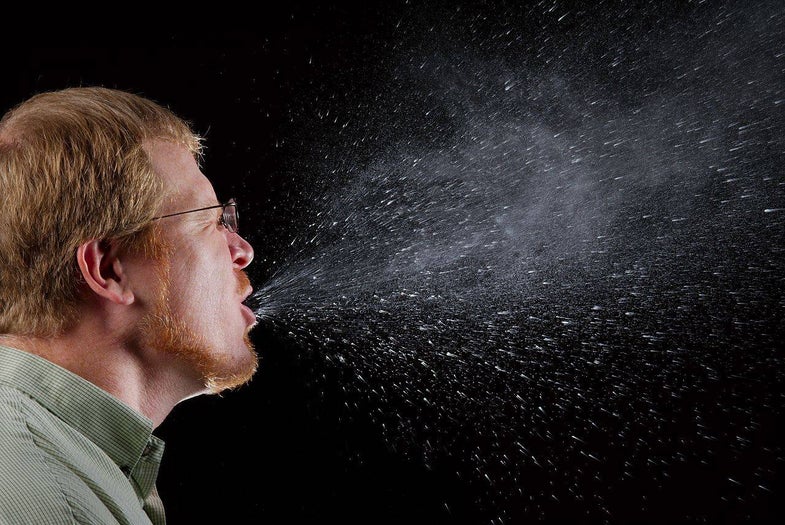This Is How Your Sneeze Looks In Super Slow Motion
Understanding how snot moves through the air could help prevent disease

A sneeze can launch mucus and saliva out of your system at 10 miles per hour (not 100 or more, contrary to common lore), often spreading pathogens in the process. But until very recently, researchers didn’t have a good idea of how exactly your nasal fluids move through space.
Now, using high-speed cameras to record then slow down dozens of sneezes, researchers from MIT learned that the combination of mucus and saliva has a predictable progression as it moves away from the body. The researchers reported their findings this week at a meeting of the American Physical Society’s Division of Fluid Dynamics and the study is currently in press with the journal Experiments in Fluids, as the BBC reports.
This isn’t the first time the researchers have set their sights on sneezes. Last year, they published a study in the Journal of Fluid Mechanics. But that study, and others like it, was only focused on the droplets that happen later in the process, which are key to understanding how disease spreads. The results varied between these studies because researchers didn’t understand the fluid dynamics of the earlier stages of the process.
For this study, the researchers had two volunteers sneeze 50 times in front of a high-speed video camera. When they slowed down the footage, the researchers realized that the mucus and saliva mix is really a “sheet” of fluid when it first leaves the body, then breaks into scraps called bag bursts, then thins out into strings or “ligaments,” and finally disperses as germ-carrying droplets.
Previous studies had shown that the smaller drops of fluid can travel surprisingly long distances; the researchers next plan to capture sneezes in 3D, using nine high-speed cameras, to better understand what conditions can change the size of the droplets. A better understanding of how these drops form and spread could help researchers and engineers stop the spread of disease, especially in enclosed spaces.